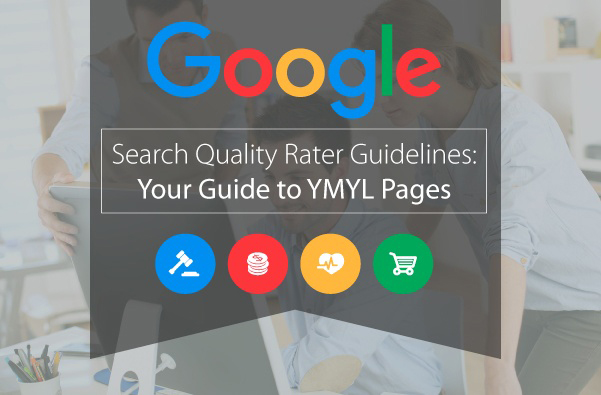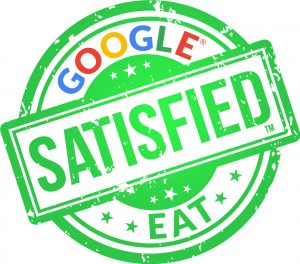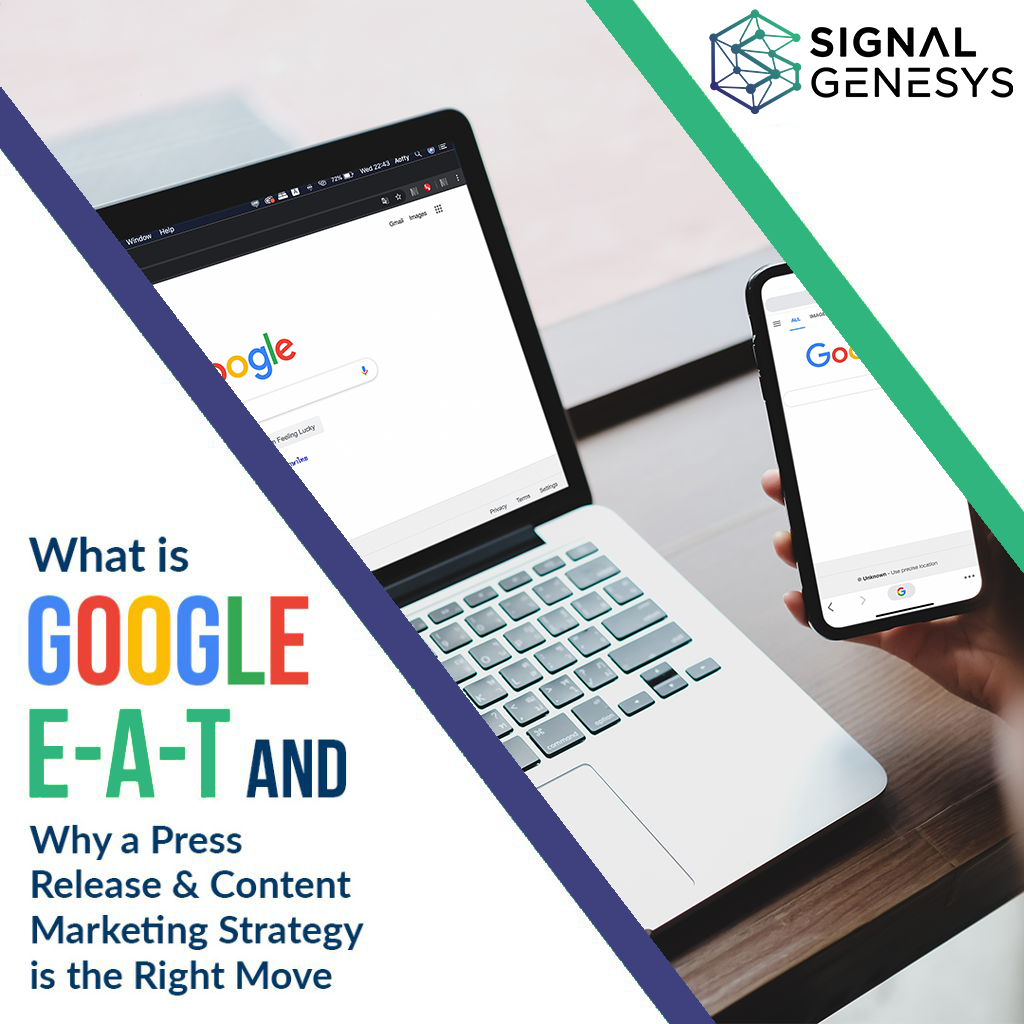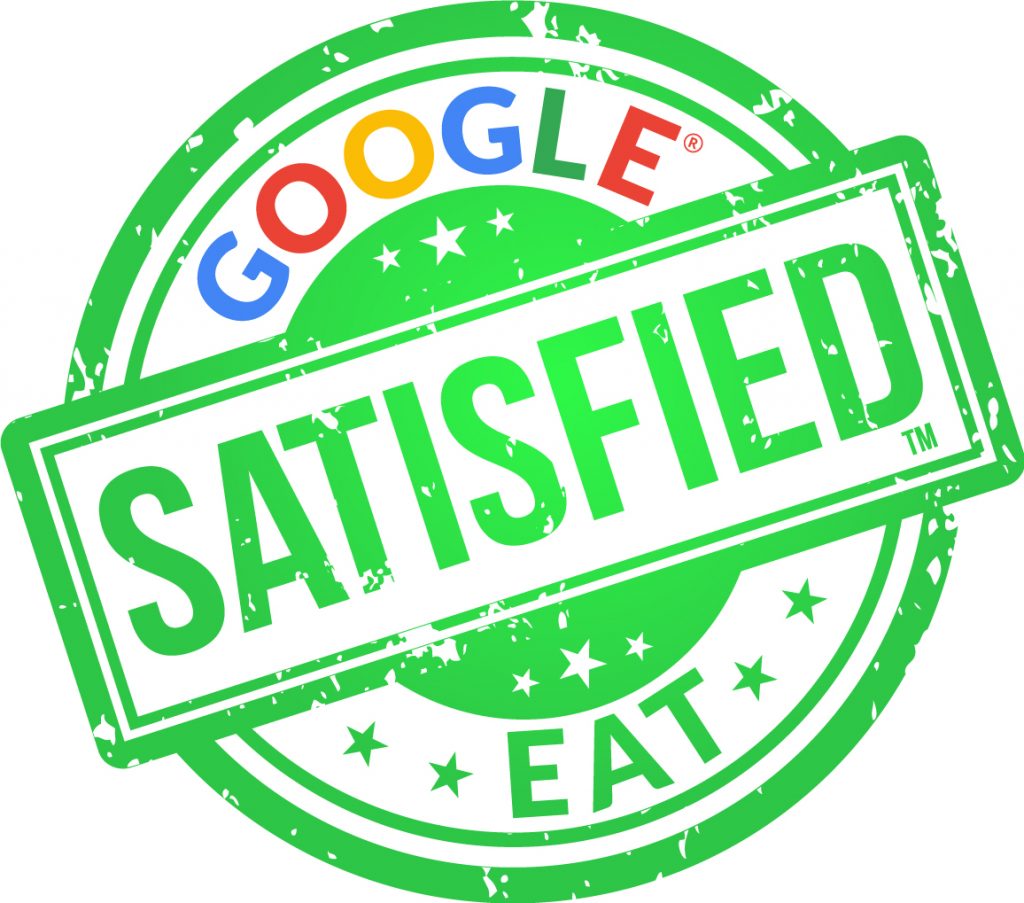
What Is Google E-A-T And How To Improve E-A-T
Many website rankings have seen big fluctuations downward since August 2018. These changes were very likely caused by Google’s ‘Medic’ update which also put an emphasis on E-A-T from the Search Quality Guide with special emphasis on YMYL sites which stands for “Your Money and Your Life”.
What are the Google E-A-T Search Quality Guidelines all about?
Google has stated that E-A-T is one of the top three considerations for determining the quality of a site or page.
According to Rachel Roszman from SearchMetrics, “Google also appears to be making ranking adjustments based on feedback from Google Quality Raters, as well as Google user signals. If you’re not familiar with Quality Raters, Google uses thousands of people from all over the world to analyze the quality of website content based on specific guidelines. It then uses the recommendations to help deliver quality content to users. The effect of the recommendations on rankings is indirect.”
— CONTENT IS STILL KING BUT DISTRIBUTION IS QUEEN… AND SHE WEARS THE PANTS —
So what does E-A-T stand for?
- Expertise
- Authoritativeness
- Trustworthiness

“This is not a new term. First leaked in 2008 and published in its latest incarnation in late 2015, Google released a 160-page document detailing its Search Quality Evaluator Guidelines. These guidelines (last updated in July 2018) are used by the 10,000-plus ‘raters’ worldwide that Google contracts to assess the quality of its search results,” cites Hazel Jarrett of SEO+.
Google Page Quality Rating GuidelinesConsider these instructions to Search Evaluators below… directly from Google’s Quality Guidelines, Section 3–
3.1 Page Quality Rating: Most Important Factors
Here are the most important factors to consider when selecting an overall Page Quality rating:
- The Purpose of the Page
- Expertise, Authoritativeness, Trustworthiness: This is an important quality characteristic.
- Main Content Quality and Amount: The rating should be based on the landing page of the task URL.
- Website Information/information about who is responsible for the MC (Main Content): Find information about the website as well as the creator of the MC.
- Website Reputation/reputation about who is responsible for the MC: Links to help with reputation research will be provided.
Note: Some tasks may ask you to view the page on your phone, but to do research (e.g., finding website information and reputation) on your desktop. Other tasks may ask you to do everything on desktop. Please follow instructions in the task.
3.2 Expertise, Authoritativeness, and Trustworthiness (E-A-T)
Remember that the first step of PQ rating is to understand the true purpose of the page. Websites or pages without some sort of beneficial purpose, including pages that are created with no attempt to help users, or pages that potentially spread hate, cause harm, or misinform or deceive users, should receive the Lowest rating.
For all other pages that have a beneficial purpose, the amount of expertise, authoritativeness, and trustworthiness (E-A-T) is very important.
Please consider:
- The expertise of the creator of the MC.
- The authoritativeness of the creator of the MC, the MC itself, and the website.
- The trustworthiness of the creator of the MC, the MC itself, and the website.
We can see that Expertise, Authoritativeness, Trustworthiness is listed here as an important quality characteristic, which is defined in more detail in section 3.2 of the guidelines.
Expertise, Authoritativeness, Trustworthiness a/k/a “E-A-T”
Since the quality guidelines have been published, these guides should been seen as a clear cut signal that Google wants to deliver search results full of pages created by trusted experts with plenty of recognized authority in their field.
In short, Google’s algorithm is looking for expertise, authority and trust [flow]. Satisfy Google’s hunger with EAT and you’ll have a happy customer if you’re a digital marketer or agency.
So why does quality content and press release marketing satisfy this insatiable appetite of Google’s Algo to EAT?
Let’s take a quick look…

Expertise
The question marketers should be asking is, “How do I position my clients online as an expert in their industry and send authoritative signals to Google to demonstrate this.” It comes down to the strategy of positioning and creating connections (links) existing authorities.
This reminds me of two great books on the topic by the way called “Positioning: the Battle for Your Mind” by Ries and Trout and another book called “Blue Ocean Strategy” by Kim and Mauborgne. The concepts in these 2 books combined are a great lesson in the strategy of expert positioning and should be on the MUST READ list for every serious marketer and agency owner or executive.
Online positioning is a combination of strategic placements and signal generation at the highest levels. Strategically speaking, getting a person or company published on high authority and high trafficked websites, especially if the are major media websites that are recognized as authorities like ABC, NBC, CBS and FOX creates quantifiable connections and link signals that build expertise and establish credibility. These major networks are clearly recognized all over the world. The average person or company isn’t getting published on sites like this so those that do are strategically positioned as an expert over the average person or average company from many different vantage points. Creating connections (link signals) with these authoritative brands and websites is a differentiator for local businesses and brands because so few companies are doing anything at all to improve their online positioning as an expert in their industry/niche.
Expert positioning also takes strategic content with an outcome of expert positioning in mind with how the content is written, how it flows and the title is certainly critical in how the article is positioned. Words, images and keywords matter so pay attention to how you are positioning your client in these critical components of EXPERTISE.
A brand can be a company brand or a personal brand. Personal brand examples abound from authors, doctors, lawyers, executives, etc. Personal brands should also have a focus on authorship. While some people may think that the days of authorship are gone by, it would be a critical mistake to join in that crowd. Authorship is alive and well. Google’s algorithm is most certainly looking to distinguish authorship and source of content and it builds a corpus of documents, references, links and source content that are tied to any given, specific author (brand) and even goes as far as assigning recognized authors and personal brands with identities.
Who are the experts in any given subject matter or topic? People want to know and so do search engines.
Authoritativeness
Authority is nothing new under the sun when it comes to ranking in Google so no one should be surprised but this is a major signal the algorithm is looking for so agencies and marketers need to be always looking for strategies and tactics to build authority to the entity.
In fact, “entity authority” is a concept and principle that is being missed by many SEO’s and agency owners. If the term is new to you, here’s a great article on entity authority that will open your eyes to the topic and get you thinking in different terms about building authority.
Authority link signals and engagement as the supporting pillar of authoritativeness are the two places to put focus on here.
Using content and press releases to build inbound authority link signals on a national level are a key component of why press releases are effective. You want more than just purely local signals to build greater authority over other local competitors. Take 3 competitors in any industry in any given local geo market and the logic of this is almost self-evident. If 2 of the competitors only have localized signals (ie. reviews, site content, local citations) and the 3rd competitor has all of the local signals too but also has inbound links from major media, TV, radio and newspaper sites from all over the USA, who has more authority in your opinion? If you can get your client’s content on authority domains on a broader scale, you are going to send authority signals to the links in those PRs which should be links to the main entity website, the entity’s Google MyBusiness listing and other branded entity assets or properties like Facebook or LinkedIn. pages for example.
Yes I know some will argue that press releases only have a certain amount of “shelf life” and industry standards are that PR content gets flushed every 30 days. This is one reason we built our own press release platform that boasts live content on major media sites for 90-365 days vs. the standard 30 and also built a proprietary permanent archiving feature to immortalize content forever (including the links in each press release pickup), to name a few of the advanced SEO features you won’t find in most other press release services or content marketing platforms.
Building entity authority is a multi-faceted strategy that should also involve a unique brand name whenever possible, branded social accounts, brand and NAP consistency, citation and location data management, engagement strategies and more.
Using high authority sites and strategic content placement on these authority sites is a foundational component of how we build entity authority to satisfy Google’s quality guidelines for authority. Press releases are a key part of this in no uncertain terms and have been for over 3 years. I certainly recommend an omni-channel approach to the strategy of building brand or entity authority. Quality content should be placed, posted, shared, advertised, etc. If you start with real, quality content and then look to distribute and place that content everywhere, your high-authority link building is completely white-hat and what any author or expert would do if producing quality content for an audience interested in said topic or subject matter.
Trustworthiness
Consider this text in Section 4 of Google’s Quality Rater Guidelines:
“4.2 A Satisfying Amount of High Quality Main Content
The quality of the MC is one of the most important criteria in Page Quality rating, and informs the E-A-T of the page. For all types of webpages, creating high quality MC takes a significant amount of at least one of the following: time, effort, expertise, and talent/skill. For news articles and information pages, high quality MC must be factually accurate for the topic and must be supported by expert consensus where such consensus exists.
For each page you evaluate, spend a few minutes examining the MC before drawing a conclusion about it. Read the article, watch the video, examine the pictures, use the calculator, play the online game, etc. Remember that MC also includes page features and functionality, so test the page out. For example, if the page is a product page on a store website, put at least one product in the cart to make sure the shopping cart is functioning. If the page is an online game, spend a few minutes playing it.
The purpose of the page will help you determine what high quality content means for that page. For example, High quality information pages should be factually accurate, clearly written, and comprehensive. High quality shopping content should allow users to find the products they want and to purchase the products easily. High quality humor or satire should be entertaining, while factual accuracy is not a requirement as long as the page would be understood as satire by users.
The amount of content necessary for the page to be satisfying depends on the topic and purpose of the page. A High quality page on a broad topic with a lot of available information will have more content than a High quality page on a narrower topic.”
As you can glean from this, building Trust is directly correlated to Quality of the Main Content on the website and quality of the content on off-page sources (such as press releases or guest blog content). Let’s not fool ourselves and think that Google’s algorithm isn’t sophisticated enough and have a sufficient amount of artificial intelligence (AI) to automate the majority of this test for quality content and whatever might be left to human intervention is directly addressed here in Section 4 of the Guide. In short, “Look and test for quality content,” which is essentially defined as content where it’s obvious that it took “time, effort, expertise and talent/skill” to produce. Interpretation: the ‘proof is in the pudding’ when it comes to content.
How We Fix Common Issues with Traditional Online Press Release Services
Traditional online press release services have been around for the better part of a decade with some newer press release distribution services popping up in the last 2-3 years. The one BIG problem with nearly all PR services and PR distribution platforms is that their content or press releases only stay live for thirty (30) days and then get flushed. This causes the content or PR page to resolve to a 404 error page and the previously indexed links that Google indexed instead lead to a page that commonly looks like this:
SEO experts have rightly seen this PR industry standard as a real drawback to building authority and inbound links using traditional press release services since the “shelf life” of most PR content is 30 days. We investigated and researched the traditional and most popular press release services (really we looked at all of them) and developed technology, programmatic and publication resolutions to not only the length of time issue, but many other shortcomings that exist in the other popular and most used PR platforms.
Consider the following features that most press release and guest blogging services cannot offer:
- Signal Genesys Serves Digital Agencies & Professionals ONLY – we do NOT compete with our agency/reseller customers
- White-Label Distributions for Your Agency and/or Clients – easily brand the press releases to your own agency or the client’s company
- Easily Embed Google Maps, Videos and Images – embed Google Maps, YouTube videos and optimized images with metadata for SEO purposes
- Proprietary WordPress Plugin adds Huge Features to Client Sites – Automatic posting, reporting and syndication of ALL PR pickups to your clients Newsroom page
- Press Releases Stay Live up to 90-days on Media Sites and Indefinitely via our Permanent Web Records feature = Quantum Leap in Benefit & Value – No other software or service provides this feature
- DIY – Write/Upload Your Own Content, We’ll Distribute For You – bring your own content to our platform or let us write it for you
- DFY – Have Signal Genesys Write & Distribute For You – complete hands off fulfillment for our agency/reseller partners
- NO RISK!! Guaranteed Major Media Network Pickups or Your Money Back. Period. – While most PR services boast of the “millions” that will “potentially” see your content and use large email distribution lists to conflate their real distribution numbers, Signal Genesys focuses ONLY on high-quality, high-authority, high-traffic distribution channels. Expert SEO’s know that ranking in search is about QUALITY NOT QUANTITY and QUANTUM DELIVERS.
WHY A PRESS RELEASE MARKETING STRATEGY IS THE RIGHT MOVE FOR LOCAL SEO AND MAP PACK SEO

In short, Local SEO is all about signal creation. If you’re the type that needs to check and cross-reference, this is an authority article on the Local Ranking Signals every business needs to create. Smart SEO’s and Digital Agency owners have been using press releases to create many of these signals, build authority, demonstrate expertise and establish trust for local business clients they are doing Local SEO for. Press release and certain types of content marketing are extremely effective for signal creation, especially for local business clients. When you create the right signals over time and enough of them, it is extremely effective in helping the entity’s GMB (Google MyBusiness) listing rank high in local search and Google 3-pack results. Most local businesses do NOT engage in content marketing and online search activities that do much to build and establish E-A-T. While many businesses and agencies will produce content on a regular basis on their blog or social media accounts, very few indeed produce strategic content and get that content out on high-authority sites which satisfy 5-6 of the signal categories listed by Moz. Let’s face it, guest blogging and link building is hard – and can be very time-consuming and/or expensive. Most business owners don’t have the ability or capabilities to distribute their content to highly trafficked websites that also have high authority, in strategic ways that yield measurable results.
Local SEO experts also know that quality citation building is also a best practice when it comes to sending local NAP signals to the search algorithm. Here are a few quick reasons why using the QN PR & Content Marketing Engine will help you rank your client’s GMB listings in the 3-Pack and localized organic searches:
- Every press release on our platform stays live indefinitely which means that all other features and benefits are in play for the life of that PR/article…
- Every press release on our platform contains a business citation with NAP and advanced SEO (easily build 50 new citations with each PR)
- Every press release on our platform includes a Google Map listing embed of that company direct from Google Maps API
- Every press release on our platform allows for up to ten (10) images optimized with meta-data
- Every press release on our platform allows for unlimited outbound links (we recommend no more than 3-5 but we don’t limit the depth or connectivity of your content on our engine)
Conclusion
In short, there are no shortcuts when it comes to quality content. I would never use spun content unless you are really putting the time back into that content to make it 100% readable. Spun content fails the time and effort test by and large and I just don’t believe that sacrificing quality is worth it because Trustworthiness is largely going to be tested under the test of quality content.
Produce strategic, quality-written content with the aim of “expert positioning” and “establishing authority” — then focus on distributing (signal creation) and placing that content on high-authority websites to send authority and trust through the links and the “connectivity” you establish in your links placed inside that quality content. Add in advanced SEO strategies like PR and PDF stacking, permanent archiving proprietary to Signal Genesys, content syndication to branded blog and social accounts, social sharing/posting along with varying your distribution channel footprint, advanced markup and you will see the results come – in 3-6 months in most scenarios, shorter for others and longer for the more competitive terms and geo markets.
Hopefully, this article helps shed some light on why press releases and strategic content marketing are critical components of a holistic SEO or web presence strategy. Google’s algorithm has a hunger to EAT quality content and it especially likes to consume quality, expert content on high authority websites with bona fide traffic.
If you want an additional article focused on why Press Releases are very much relevant for SEO, here is a really good article and guide from Cognitive SEO entitled “Are Press Releases Still Relevant for SEO in 2019?”
If you are a digital agency owner or professional looking for a next-generation press release and content marketing solution, contact us to learn more or Apply Now to become an agency/reseller partner!





